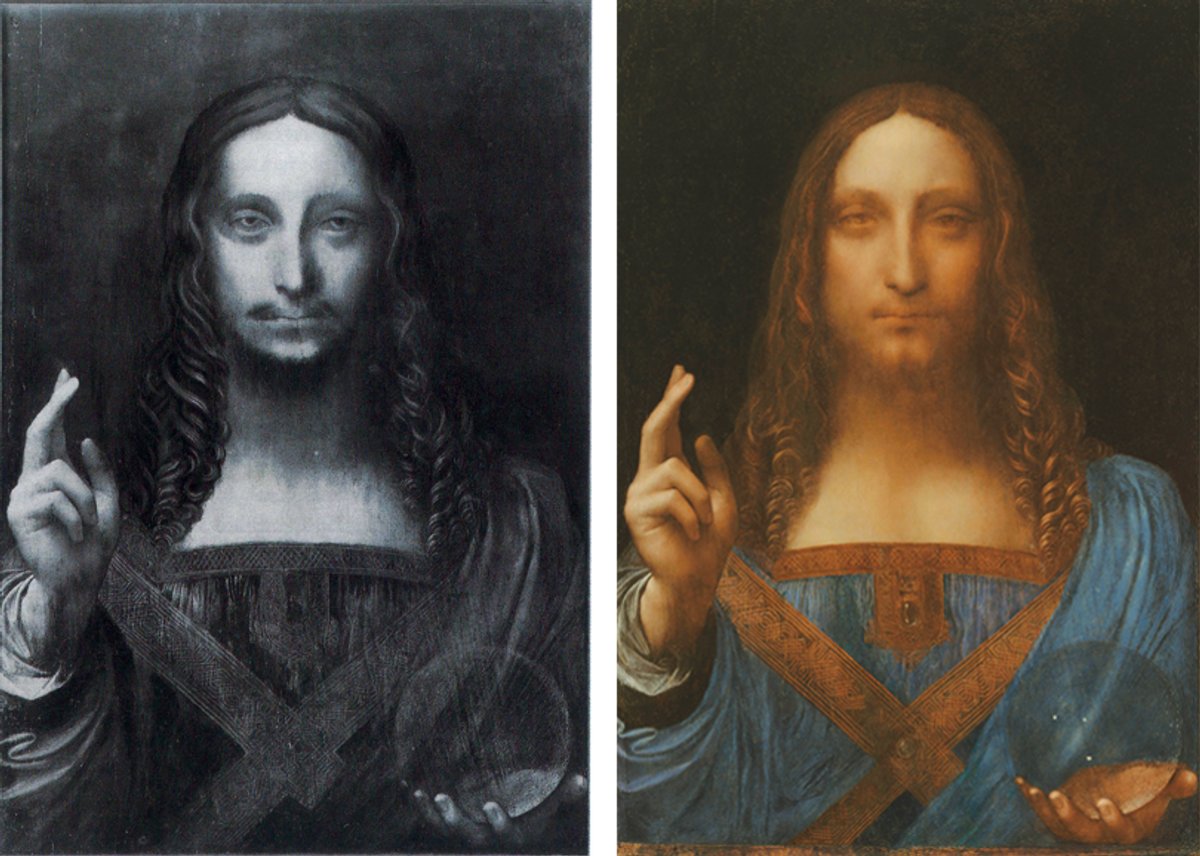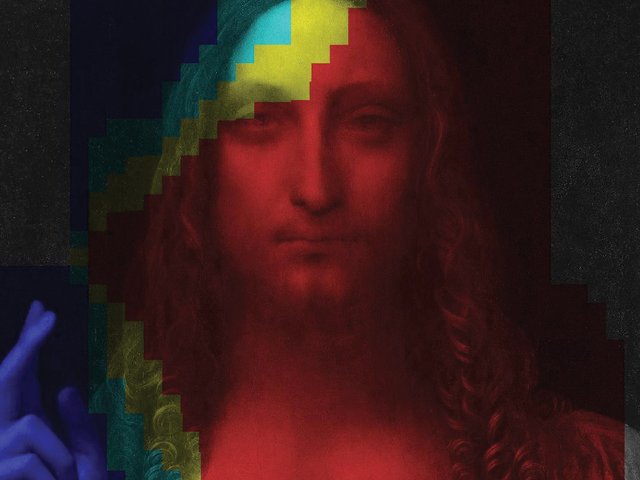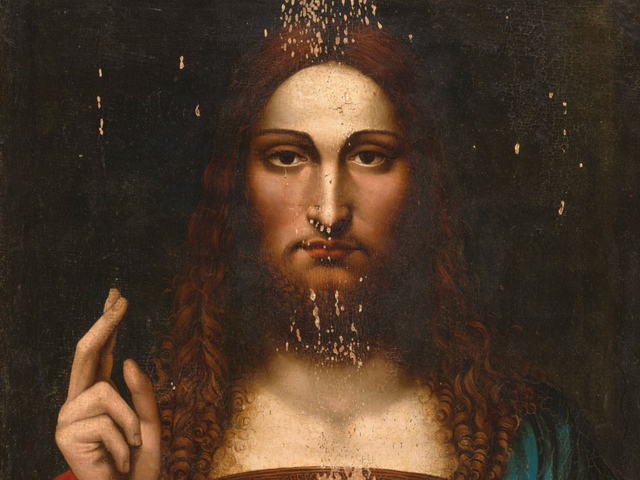Christie’s has now released a condition report on Leonardo’s Salvator Mundi (around 1500), which will be auctioned on Wednesday 15 November in New York. It begins with the good news, explaining that Leonardo used at least five thin layers of glazing to build up the flesh tones of Christ’s face, as he did with the Mona Lisa (1503-19). X-rays and infrared reflectography reveal numerous pentimenti (visible changes) that help confirm it is Leonardo’s original.
More disturbing, though, is the report’s revelation that Leonardo used a walnut panel with a knot. By around 1600 this had caused “a long, curved split to develop in the panel, which runs vertically to the left of Christ’s head (but does not go through his face)”. The Christie’s report also records that the panel “suffered worm infestation, which led to worm tunnelling which weakened the wood”.
A video showing Leonardo's Salvator Mundi in 1904 and after restoration Christie's
The Salvator Mundi was restored by New York-based Dianne Modestini in 2007-10. “Layers of crude and distorting old overpaints were removed and losses were sensitively and minimally inpainted,” the Christie’s report says of her conservation work, adding that such losses “would be expected in most paintings over 500 years old”.
Modestini’s own report, published in a book on Leonardo’s technical practice, gives further details. The Salvator Mundi suffered from an early stage and was subsequently repaired on a number of occasions. The original black background was replaced with green and later with a muddy brown. By 1900, when the picture was acquired by Francis Cook as by Bernardino Luini, a follower of Leonardo, it had been “grotesquely repainted”, including the addition of a beard on the face of Christ.
In 2005 the Salvator Mundi was sold in a small, regional auction in America (possibly in Louisiana or Virginia), without an attribution. The price is believed to have been less than $10,000. By this time the later repainting had been removed; Modestini commented that: “I shudder to think what might have been used.” The painting had also been revarnished not long before the 2005 sale. This varnish was “sticky and uneven”, with crude touch-ups, quite possibly the work of “the owner or a local amateur”.
Modestini then professionally restored the Salvator Mundi. Despite some damage to the face, the flesh tones fortunately retain their layer structure. She stabilised the picture, removed most of the later overpaint and fillings, and made cosmetic changes to bring it back closer to Leonardo’s original.
The Salvator Mundi has an estimate of about $100m. Christie’s already has a guaranteed buyer at a slightly lower price, which will mean it will still sell even if it fails to make its reserve. The final sum will be a record for an Old Master at auction.




